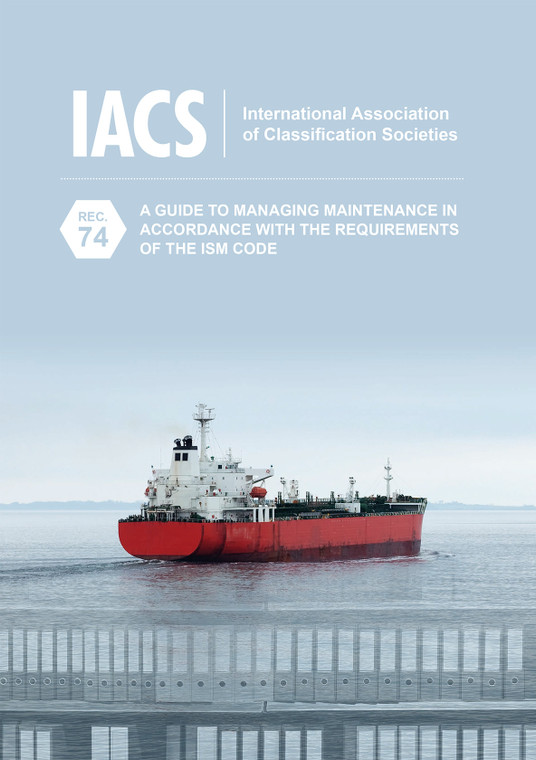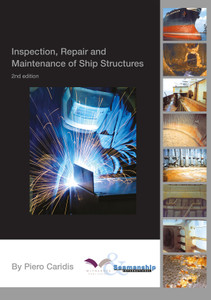
This document aims to assist ship operators in meeting the shipboard maintenance requirements of the ISM Code by providing guidance on the development and improvement of maintenance management systems.
A well designed and effectively implemented maintenance management system not only helps meet the safety and pollution prevention objectives established by the ISM Code, but also safeguards against risks to the ship, the crew and the environment. This publication aids in achieving this by providing guidance on the development and improvement of maintenance management systems. It covers:
- How the ISM Code defines maintenance
- how to approach maintenance
- details of records that should be kept on board
- the identification and testing of critical equipment.
It also includes a checklist of the key maintenance system management controls.
The ISM Code makes it clear that the ship operator (the "Company") is responsible for ensuring the safe and pollution-free operation of the ship. In particular, the Company is required to ensure that the ship’s hull, machinery and equipment are maintained and operated in accordance with the applicable rules and regulations and any additional requirements that may be established by the Company.
This will be achieved only if the Company’s senior management is committed to applying the necessary resources, including appropriately qualified and competent crews.
A well designed and effectively implemented maintenance management system not only helps the Company to meet the safety and pollution prevention objectives established by the ISM Code but is also a sensible investment in the protection of a very valuable asset.
The management of shipboard maintenance is often regarded as an entirely technical matter, somehow unrelated to safety and pollution prevention, and the exclusive responsibility of the technical staff. As a result, shipboard maintenance is the least-developed and weakest element in many management systems. This increases the risks to personnel, property and the environment, and can result in substantial costs arising from repairs and operational delays. It not only threatens ISM certification, but also increases the risk of port state control detentions. (Of all the port state control detentions attributed to failures in shipboard safety management systems, more have referred to maintenance than to any other clause of the ISM Code.)
The purpose of this document is to assist ship operators in meeting the requirements of the ISM Code with respect to shipboard maintenance and to provide guidance on the development and improvement of maintenance management systems by establishing the principles on which they should be based, and by identifying their fundamental elements.
Although it provides useful guidance on what external auditors will be looking for, companies should avoid the temptation to create systems with the sole aim of keeping the auditor happy. The objective must be to ensure the safe and reliable operation of the ship and its equipment, and compliance with all the applicable regulations. How this is achieved will depend on the size and complexity of the company and the types of ships that it operates. The system may be entirely electronic, entirely paper-based, or a combination of the two, and the level of shore-based supervision will vary from one organization to another. All that matters is that the system works, and that it works in a way that best suits the company. If it does, it can pose no threat to the company’s ISM certification.
Introduction
Chapter 1: What the Code Says About Maintenance
Chapter 2: A Systematic Approach to Maintenance
Chapter 3: What Records Should be Kept
Chapter 4: The Identification and Testing of ‘Critical’ Equipment
Dedicated to safe ships and clean seas, IACS makes a unique contribution to maritime safety and regulation through technical support, compliance verification and research development. More than 90% of the world’s cargo carrying tonnage is covered by the classification design, construction and through-life compliance rules and standards set but the twelve Members Societies of IACS.
IACS is a not for profit membership organisation of classification societies that establish minimum technical standards and requirements that address maritime safety and environmental protection and ensures their consistent application. It carries out this responsibility through its panels, expert groups and project teams and provides a Quality System Certification Scheme (QSCS) that its Members comply with, as an assurance of professional integrity and maintenance of high professional standards. IACS is recognized as the principle technical advisor of IMO.
- Number of Pages:
- 25
- ISBN:
- 9781856097529
- Published Date:
- November 2017
- Binding Format:
- Paperback
- Book Height:
- 235 mm
- Book Width:
- 155 mm
- Weight:
- 0.7 kg
- Preview:
- Yes
- Publication Date:
- November 2017






